Kodak PixPro AZ521 review
Can the Kodak AZ521 with whopping 52x optical zoom put Kodak back in the game?

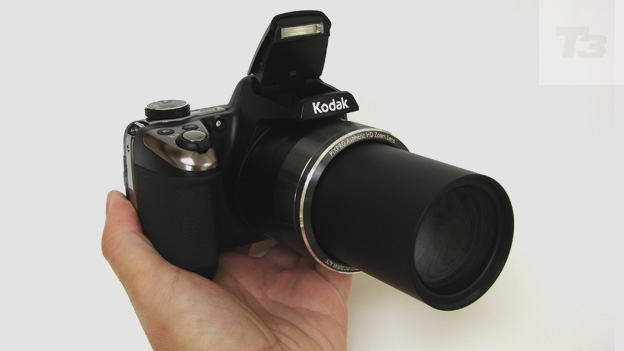
-
+
Lots of framing options
-
+
Sharp and colourful results
-
+
Broad focal range
-
-
A bit bulky
-
-
Slow auto focus
-
-
No angle-adjustable screen
Why you can trust T3


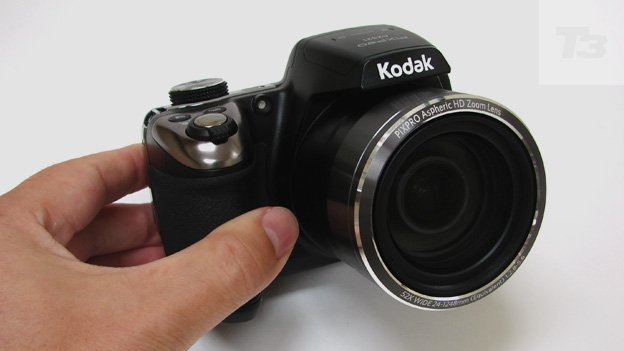
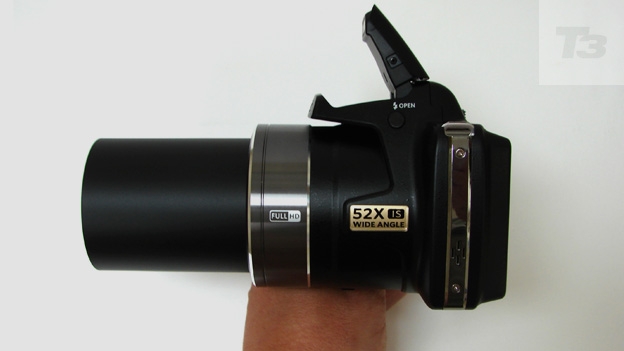
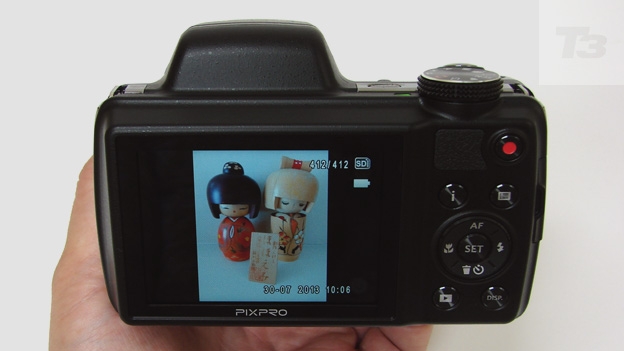
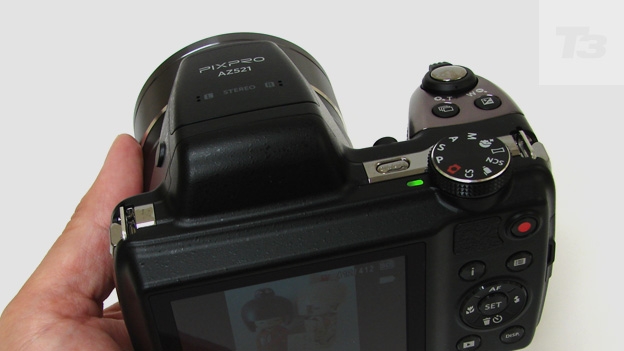
The Kodak PixPro AZ521 is one of the latest cameras from Kodak's new license holder, but is this 52x optical zoom camera worth your cash?
Kodak's consumer digital cameras always appeared to us to show a similar design ethos to old-school American motorcars: big, bold and brassy, with huge grips, dials and knobs that seemed pitched firmly at the sausage-fingered photographer. Perhaps that's why they didn't actually sell as well over here as their nimble-buttoned Japanese equivalents.
However, that was a couple of years back. Another firm, JK Imaging, now holds the license for Kodak-branded cameras - although Kodak US is apparently still closely involved - the EasyShare branding has been replaced with the snappier sounding PixPro, and the 52x optical zoom equipped Kodak PixPro AZ521 bridge model is the latest Kodak to hit the T3 review slab.
With the AZ standing for Astro Zoom, in film speak you could say the range has very much been re-booted for 2013.
Intriguingly, JK Imaging is also one of a handful to have pledged allegiance to the Micro Four Thirds format interchangeable lens system co-developed by Olympus and Panasonic, which means there's a distinct possibility of seeing a Kodak-branded compact system camera at some point.
But not yet - not that you'd want to change the lens on the Kodak AZ521 anyway, as its super-flexible, all-in-one ethos is the whole point. Other than that, the black and gun metal grey camera incorporates a 16.38 effective megapixel 1/2.3-inch CMOS sensor and sports a suggested retail price of £249.99, which appears affordable.
Indeed at one time that money buying you a focal range that starts out at a wide angle 24mm and runs up to 1248mm in 35mm film terms would have been unthinkable. Such a specification immediately puts it ahead of most of the competition (save the new 60x Panasonic FZ72), with a maximum aperture of a respectably bright (for a zoom camera) f/2.8.
Naturally, the facility to shoot Full HD 1920x1080 pixels video clips at a smooth 30fps is also included, as is optical image stabilisation to prevent image blur resulting from shaky hands, plus 360° panorama shooting and machine gun-like burst mode. We don't get Wi-Fi or GPS tagging though, which might have made it even more of a viable travel zoom option.
Going up against the likes of the Fujifilm X-S1 and the Nikon Coolpix P-510, does this Kodak have enough to offer a viable alternative to the big-brand super zooms, for those after a non-interchangeable lens camera?
Kodak AZ521: Controls
Powering up ready in a couple of seconds, the AZ521's design follows the majority of bridge cameras in being shaped like a DSLR, even though a pop up flash occupies the position that a viewfinder otherwise would. Thus we're purely reliant on the back plate LCD for lining up and reviewing images.
Aiding convenience, a zoom lever with a large ridged front edge encircles the shutter release button, both sitting up front on the forward slope of the handgrip. This itself is large enough for users to be able to curl almost four full fingers around for added support, even if the lens is also supported by built-in optical image stabilisation.
Sitting just behind this control are two inset parallel buttons, one offering a choice of drive modes - single shot, a couple of continuous shooting options plus even a time lapse capture option - while the second button allows the adjustment of exposure, here a +/- 3EV range.
Behind this again we have a small lozenge-shaped power button set into a chrome strip next to the largest control on the camera: a 10-option shooting mode dial with roughened edge and just the right amount of give.
Here we get the usual smattering of fully automatic, manual and creative settings, with options for video, pre-optimised scene modes and a dedicated portrait setting, charmingly known as 'face beautifier'.
Surprisingly for what comes across as an entry-level super zoom not a million miles away from the likes of the Nikon L320 or L820 (save for the zoom range), we also get a user-definable custom setting on the dial. It's also worth pointing out that stereo microphones are set into the hump that houses the pop-up flash - again not a feature that you always see on a budget bridge model.
The backplate controls, meanwhile, are pretty much what we'd expect to find on any snapshot camera, which helps the AZ521 maintain an air of approachability. So we find a red record button for instant video clips top right of the backplate, next to a small pad for resting the thumb.
Beneath this is a menu button illustrated by a text-like icon, rather than just simply saying 'menu', but its purpose is readily apparent, as are further playback and display buttons.
On the right of the screen also sits a familiar multi-directional command pad, offering access to flash, self timer, close up (macro) mode and delete options, as well as the ability, when in one of the camera's creative modes, such as program, to alter the auto focus point or switch to object tracking if shooting action imagery.
Kodak AZ521: Screen
The Kodak AZ521 offers its user a standard sized 3-inch back screen, with a mid range 460k-dot resolution. The screen is fixed, in that it doesn't tilt or swivel at all. It's not a touch screen either - not that this matters greatly in a practical sense, as there are plenty of regular hard keys alongside it for controlling crucial functions.
Menu options are clearly and logically presented on screen for ease of operation, and it's a capable enough tool for framing shots at least, no better or worse than rivals when used in bright sunshine.
Kodak AZ521: Battery
Unlike some cheaper bridge cameras from its rivals, the AZ521 comes powered by a lithium ion rechargeable battery rather than a fistful of AAs. However, like an increasing number of digital cameras we don't get a standalone charger unit supplied; instead the battery is replenished within the camera, with a USB lead and suitably compatible mains plug provided for the purpose.
While battery life isn't overly impressive at 240 shots from a full charge if we're comparing it with a compact system camera or actual DSLR, that's equal to the performance of most fixed-lens snapshot cameras.
Get all the latest news, reviews, deals and buying guides on gorgeous tech, home and active products from the T3 experts
Kodak AZ521: Picture quality
This being a budget super zoom, we get JPEG-only photo files straight out of the camera rather than the ability to shoot uncompressed Raw alongside, but that won't be a surprise.
Though there is a slight fisheye effect and loss of definition towards the edges of frame at maximum wideangle setting, this is true of most snapshot cameras providing an ultra-wide 24mm equivalent option and is better hidden when photographing natural scenes than man-made ones.
A pleasing degree of sharpness is also delivered courtesy of a physically large lens being twinned with its average-sized 1/2.3-inch sensor. Get good light and clear blue skies, with pixel fringing noticeable by its absence, and some shots are almost a knockout.
Nothing seems to have been broken in the transfer of Kodak's camera business to that of a licensee either. We still get the expected Kodak-like well-saturated colours, delivering plenty of punch straight out of the camera; even if, again as expected, it took us two or three attempts to get a reasonably sharp picture when shooting handheld at extreme telephoto (full zoom) setting.
That said, there's enough of a focal range to play with here that we didn't feel the need to have to go right up to maximum zoom all the time, to still be able to drag the faraway much closer.
Thankfully the optical zoom can also be deployed when shooting video, focus automatically adjusting should the subject move about your frame or you simply swap subject mid recording. If we've one criticism of the auto focus (AF) it would be that it could be quicker still to lock onto target; but again the AZ521's performance is commensurate with a camera of this price.
Kodak AZ521: Verdict
If you're a photographer looking to bring the faraway much, much closer, without spending thousands on a dedicated telephoto lens for your DSLR - or don't want the bells, whistles and comparative bulk of such a camera - this 16-megapixel, 52x optical zoom Kodak would appear to offer plenty of bang for your buck.
While there's nothing wildly innovative or groundbreaking to shout about here, save for that whopping focal range equivalent to 24-1248mm in 35mm film terms, the price tag reflects this. But in truth it's with regard to the colourful, detail rich appearance of the camera's images that this Kodak excels.
Kodak AZ521 release date: Out now
Kodak AZ521 price: £249.99
Gavin Stoker has been writing about photography and technology for the past 20 years. He currently edits the trade magazine British Photographic Industry News - BPI News for short - which is a member of TIPA, the international Technical Imaging Press Association.
